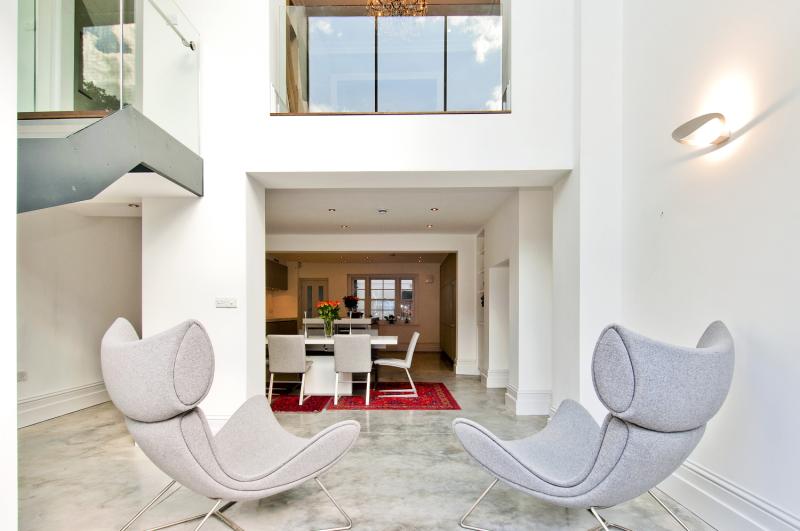Adding Value by Increasing the Size of a Property
This article discusses options in increasing the size of an existing property and the importance of strategizing in order to minimise the risk of losing money.
Achieving the Biggest Profit
Various ways of increasing the size of a property include extending the property outwards, upwards and downwards. This could be achieved by a rear extension, basement conversion, roof extension or loft conversion. Alternations, as such, typically require planning permission in order to start the work. Planning permission can incur additional costs if an architect is required to draft plans.
Therefore, before starting the process for any extension or conversion, a buyer must be confident of achieving a future sale price that will easily cover the cost of building works as well as the initial purchase cost. For example, if a buyer decides to do a basement conversation to increase the square footage and the price of such a conversation is roughly £500 per square foot, then they will need to achieve at least £500 per square foot on the “new area” just to break even.


Converting a basement in a London Borough where house prices, on average, achieve a low price-per-square foot doesn’t make sense at it won’t cover costs. Boroughs such as Bexley, Barking and Dagenham, or Merton won’t pay off as house prices are less than £500 per square foot. Therefore, its best to aim for boroughs such as Camden, Westminster, Kensington and Chelsea, Islington, Fulham, Hammersmith – prime central London locations where a seller can achieve upwards of £1,000 per square foot – easily covering the cost of the extension/basement or loft conversion whilst generating a profit.
However, the issues with property in a prime central London location are twofold – 1) The initial cost of the property will be high –therefore, the buyer will be exposed to a higher purchase price as well as stamp duty costs. 2) There is no guarantee the local council will approve a planning application for an extension or conversion. Therefore, a buyer could pay a high price to purchase the property, incur costs to apply for planning, and subsequently have their planning application is refused. This leaves buyer out-of-pocket as the only option is to sell the property as they cannot add value to it.
Strategize to Minimise Risk
Buyers should do their research first – before recklessly purchasing a property only to discover afterwards that options are limited due to planning restrictions.
1) Select a property with existing planning permission. Purchasing a property that already holds planning permission removes the uncertainty of future plans . The onus would simply be costing the project before purchasing to ensure the proposed work will be affordable and profitable. An architectural firm that is an affiliate of Propcision is available to chat about any prospective projects. Therefore, it may be worth a quick phone chat to get a sense of the scope and budget of the project.
2) Purchase a property in a “planning permission friendly borough”. By purchasing a property in a borough that has the highest rate of approvals of planning applications, at least the scale is somewhat tipped in the buyer's favour provided that the plans to extend are not outrageous and out-of-character for the local area. Simply be careful about Listed buildings as they have stricter regulations regarding extensions.

The chart to the left illustrates the top 5 boroughs in London that have the highest approval rates, according to Planning Applications Statistics, December 2015
Notice some boroughs with the highest rate of approvals are quite expensive such as Camden and City of London. However, Southwark, Sutton and Wandsworth are in the top 5 and are Boroughs where asking prices hover upwards £700 per square foot. Therefore, making these boroughs attractive.
Statistics show that at the bottom of the list are Enfield, Harrow, Waltham Forest, Newham, and Hillington for worst approval ratings. With the exception of Waltham Forest, most of these boroughs average asking prices are too low to consider as possibilities to make a profit through increasing the square footage of a property.
3) Select a property where planning permission has been granted for similar proposed works to neighbouring properties. Research the neighbouring properties on the local council’s online planning portal to obtain the actual application and drawings of approved planning applications to determine the possibilities for a similar property for sale.
4) Consider a loft conversion. At best, the least expensive way of increasing the square footage would be a loft conversation however the property would need to have the appropriate roofing structure and height in order to accommodate.
Most Boroughs Have Plenty of Properties Requiring Work
The chart to the right illustrates the percentage of properties in each borough that has scope to improve. Most Boroughs have at least 7% or more properties that have the possibility to improve. That’s a lot of properties to choose from so ensure to select carefully.
